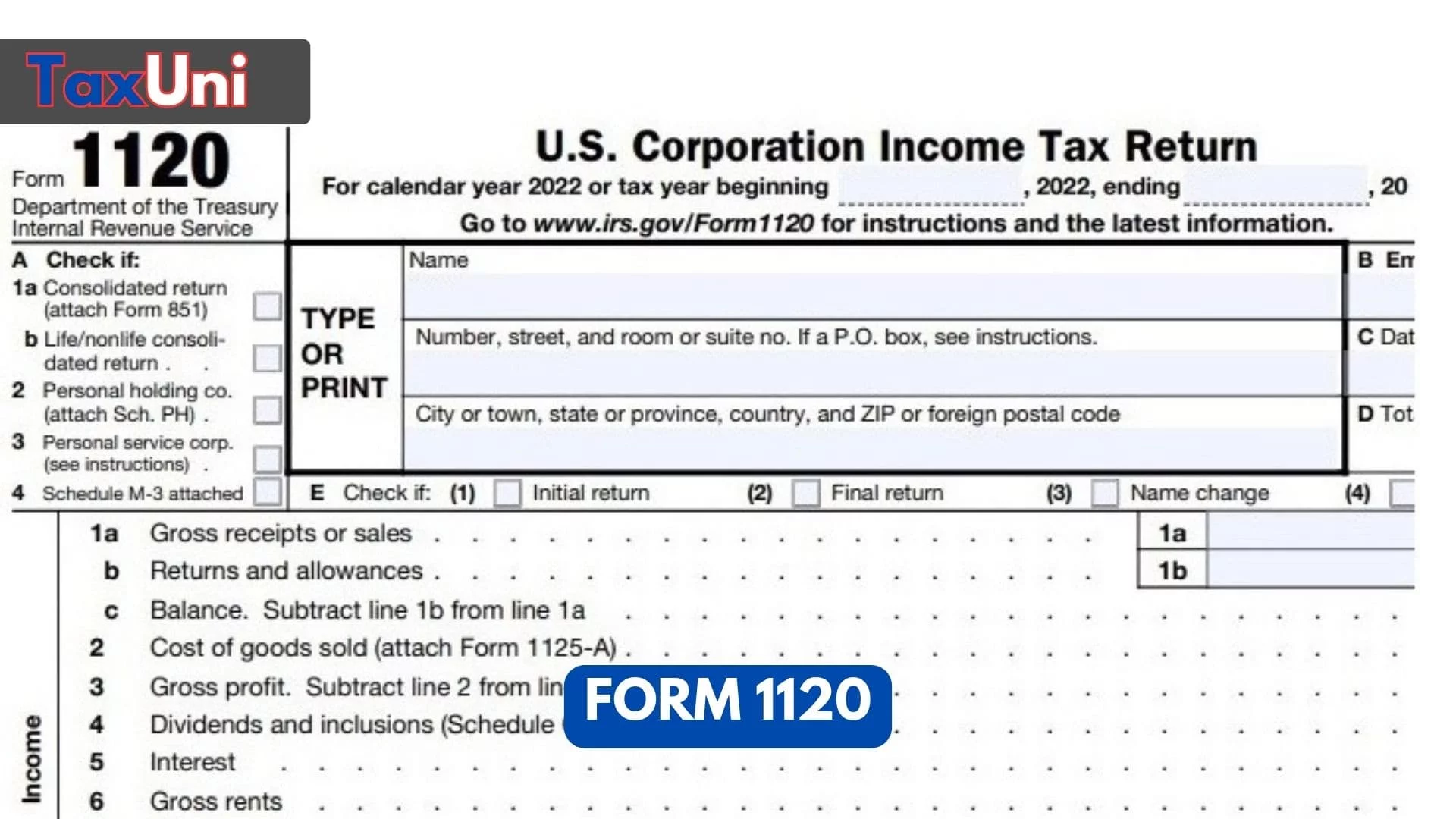Form 1120
Every business owner has to file Form 1120 every year. This article will cover everything related to IRS Form 1120.

Form 1120 is used to report the income, gains, losses, credits, and deductions of businesses registered as S corporations. These companies have fewer than 100 shareholders. S corps are pass-through entities, meaning their profits “pass through” to the shareholders’ personal income tax returns. The form also asks for details about your business’s assets and liabilities. The IRS requires S corporations to file this form every year, but there are exceptions to this rule. For example, an S corporation may not need to file Form 1120 if it is a limited liability company (LLC).
Additionally, a business with a short tax year ending anytime in June can still file its form if it falls within the first three months of that year. It is also possible for small business owners to fill out these forms on their own using special tax softwares.
When to file Form 1120?
All domestic corporations (or associations electing to be taxed as corporations) must file Form 1120 unless they are exempt, required, or elected to file a special return listed under Special Returns for Certain Organizations.
Generally, Form 1120 is due by the 15th day of the 3rd month following the end of a corporation’s tax year, but that deadline can be extended if it falls on a Saturday, Sunday, or legal holiday. The corporation must complete the form and mail it to the IRS by the due date, which will be the next business day.

How to Fill Out Form 1120?
Form 1120 can be filed online or by mail. You can complete Form 1120 using your business’s financial statements, including:
- The annual balance sheet
- Profit or loss statement.
If you’re not sure what information to record, it’s a good idea to consult your accounting firm or a certified public accountant for advice. Once you’ve filed Form 1120, you can also use it to calculate your corporate tax liability. On the first page, you’ll need to start with your taxable income and multiply it by the corporate tax rate. You can also add your business tax credits and estimated payments to arrive at your corporation’s tax bill.
If your corporation buys shares in other companies, you may be able to deduct a percentage of those dividends on Schedule C. This is an effective way to lower your corporation’s tax bill. In addition, if your business has business ties to other countries, you must file Form 1120-F with your tax return. This is a special type of form that protects your rights to receive deductions and credits from those countries.
How Do S Corporations Report Their Income?
As an S Corporation, the IRS requires that you file Form 1120-S with Schedule K-1. This document reports the percentage of a corporation’s profits that are owned by each shareholder and is used to allocate profit and loss. Without an accurate Form 1120-S and Schedule K-1, shareholders cannot receive certain tax benefits.
Using the instructions on Form 1120-S, you should be able to complete the form quickly and easily. However, it is also important to consider the limitations on deductions and credits for an S Corporation. This is especially true if the S Corporation has depreciable property or rental properties.





